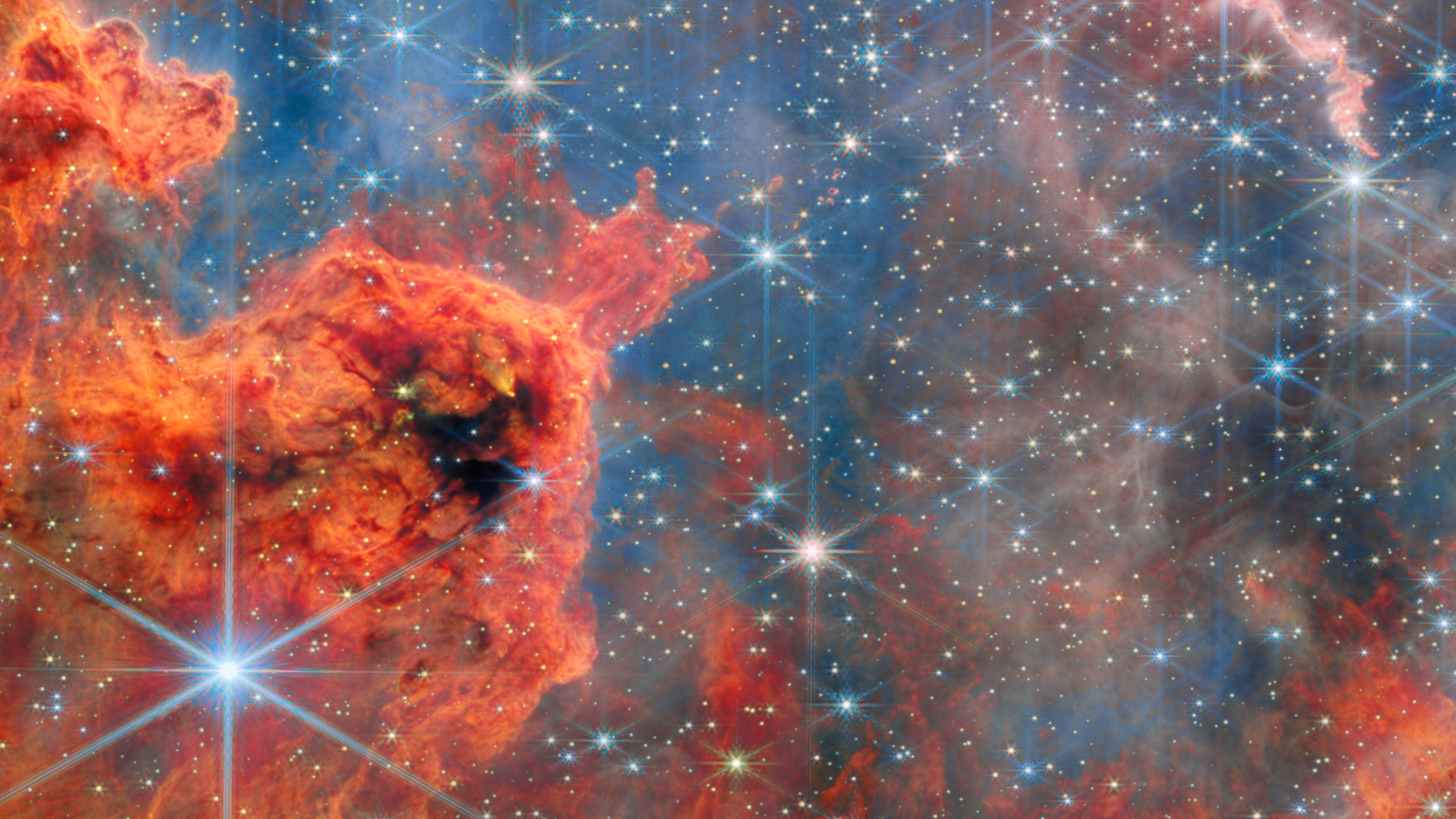Astronotes: December 26, 2004 - January 8, 2005
January 6
Private Rocket Liftoff Pushed to March
The launch debut of the Falcon 1 private rocket is now slipping into March.
Falcon 1 has been designed and built by Space Exploration Technologies (SpaceX) of El Segundo, California. To be launched from Vandenberg Air Force Base in California, the booster is bankrolled by entrepreneur, Elon Musk, who serves as the group's Chief Executive Officer and Chief Technology Officer.

Shotwell said the long pole in getting Falcon 1 off the ground is engine testing. A full vehicle hold down firing on the launch pad as a final verification is still ahead, as is integration of rocket with the TacSat-1 microsatellite, built by the Naval Research Laboratory.
-- Leonard David
January 5
Breaking space news, the latest updates on rocket launches, skywatching events and more!
NASA Extends Mission for Rain-Watching Spacecraft
January 3
NASA's FUSE Spacecraft Starts New Year in Woe
January 2
Meteor Shower Peaks Before Dawn Monday
The annual Quadrantid meteor shower peaks before dawn Monday, Jan. 3. The best areas to see the shooting stars will be from western parts of North America.
The shower will peak at around 7:20 a.m. ET (4:20 a.m. PT), according to the NASA-run website Spaceweather.com. Westerners with clear and dark skies could see dozens or even perhaps more than a hundred meteors per hour.
Rates will be significantly less in cities and suburbs where local light pollution drowns out fainter stars and meteors. The highest rates could come in short bursts, meaning that a rate of dozens of meteors per hour might last for several minutes or less, followed by gaps of reduced activity.
The shower is caused by an asteroid-like object catalogued as 2003 EH1. It is thought to be a chunk that broke off a comet centuries ago. Earth moves through the debris stream quickly, so nights before and after the predicted peak typically prove uneventful.
The meteors could appear anywhere in the sky, but traced back each will appear to emanate from a point in the northeast sky. Viewer's should dress warm, allow 15 minutes to adjust to the darkness, and find a location that allows scanning of a broad region of the sky.
- Meteor Watching Tips
December 31
CalTech and JPL Go Mecha for Rose Parade
December 29
Robot Inspector: Idea has Legs
While there's on-going debate about robotic versus the human touch in servicing the Hubble Space Telescope, those working on NASA's "Vision for Space Exploration initiative" are steadfast in their push for androids to play pivotal roles.
NASA has awarded Northrop Grumman Corporation contract money to develop an insect-like robot to inspect and repair spacecraft exteriors. The idea has legs. That is, this bolted together beast of burden would autonomously examine and take care of spacecraft exteriors.
The proposed Crew Exploration Vehicle (CEV) - NASA's dream machine for dispatching humans beyond low Earth orbit - would be a candidate for the robotic maid service. The six-legged robot would improve astronaut safety by lessening human spacewalk time, freeing space travelers to perform more exacting and beneficial work.

By evolving this key technology it "will help NASA reach its goal of implementing an integrated space exploration architecture that's technically achievable, logistically supportable and economically sustainable well into the future," said Doug Young, Northrop Grumman Integrated Systems' director of space systems and corporate lead executive for Project Constellation.
-- Leonard David
December 27
Plug-and-Play Moon Base
NASA has selected a set of ideas from the Northrop Grumman Corporation to help push forward human and robotic technologies as part of the space agency's "Moon, Mars, and beyond" agenda.

The firm will also develop a restowable, heat-resistant "skirt" that deploys around a spacecraft just before reentry. In addition, an engine that uses fuel produced on the Moon is on the company's to-do list, for use on a "space ferry" that pushes people and cargo between the lunar surface and lunar orbit.
Another task is to develop ways to autonomously check out the integrity of space hardware prior to human occupation. This concept would allow "intelligent modular systems" to be assembled, disassembled, or reconfigured to create plug-and-play habitats on the Moon that would have the welcome light already on prior to crew arrival.
-- Leonard David
Missed something from last week? Astronotes Archive

Space.com is the premier source of space exploration, innovation and astronomy news, chronicling (and celebrating) humanity's ongoing expansion across the final frontier. Originally founded in 1999, Space.com is, and always has been, the passion of writers and editors who are space fans and also trained journalists. Our current news team consists of Editor-in-Chief Tariq Malik; Editor Hanneke Weitering, Senior Space Writer Mike Wall; Senior Writer Meghan Bartels; Senior Writer Chelsea Gohd, Senior Writer Tereza Pultarova and Staff Writer Alexander Cox, focusing on e-commerce. Senior Producer Steve Spaleta oversees our space videos, with Diana Whitcroft as our Social Media Editor.
